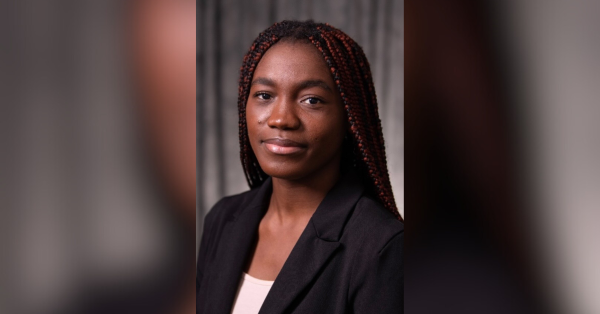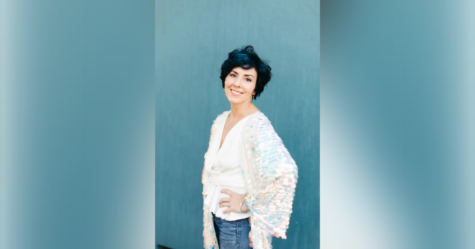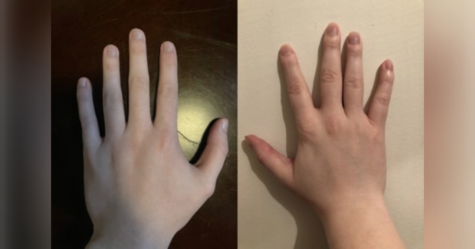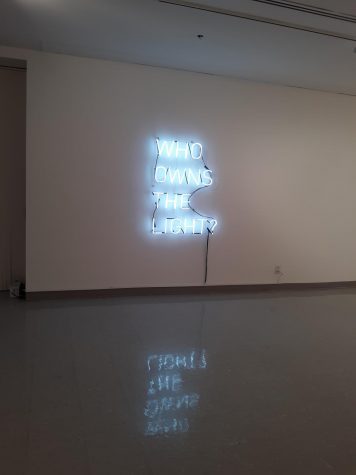‘Spielberg, Diddy, Oprah, and Me’ Reveals Artist’s Background
Chicago-based visual artist Stephanie Graham visited the University of Illinois Springfield on Thursday, Nov. 1, to unveil her new exhibition, “Love You Bro.” The title of Graham’s ECCE Speaker Series lecture, “Spielberg, Diddy, Oprah and Me,” reflected her interest in exploring several mediums, like those individuals she finds aspirational.
Regardless of what format it takes, Graham’s art is shaped by the stories she has accumulated over her lifetime. Her first project, “Fella,” was a collection of composite photography in which she posed as herself, as well as the men she dated in the past. One of these satirical images graced the cover of the Chicago Defender in February.
Graham then moved into film, creating “So This One Guy,” a series where women share their own experiences with bad dates. She still continues this project after six years. “Even though we all have different experiences, different backgrounds, there are some things we can all relate with,” Graham said, like botched dates. “In today’s political climate, it’s important to find ways to connect with people who are different from us.”
Graham’s work is also informed by her experience growing up as “one of three black kids” in the northwest Chicago suburbs, she said. According to Graham, she found herself “giving non-black people a pass, because [I] needed somebody to talk about life with.” While working as a HATCH resident at the Chicago Artists Coalition, Graham created the “Selected Black Experience Council,” a performative board designed to authorize who can talk about blackness. The SBEC accepted nominations from those who believed they deserved a “black pass,” awarding special rights to certain celebrities and non-black Chicago residents.
Graham also forayed into three-dimensional art with the “Golden Kids,” mirrored sculptures in the silhouette of children killed by gun violence in Chicago. She said the purpose of the project was to allow the kids left behind to interact with their friends who had passed.
Although Graham does not want her work to be viewed exclusively through the lens of race and gender, many pieces envoke ideas related to #BlackLivesMatter and living as a person of color during a dangerous political era.
According to Graham, it is vital to find joy and practice self care in a time when “the world is really heavy.” This idea, coupled with her previous explorations into relationships, inspired her photo series “Love You Bro,” which Graham calls a celebration of black men and friendship. “I was really interested in the male perspective on relationships” stated Graham.
Curator Tempestt Hazel, who also moderated the lecture, said she was drawn to “Love You Bro” because of its expression of joy, which she said is not always associated with African American men.
“We are kind of at a moment where seeing that is a radical thing,” Hazel said.
Hazel also commented on how comedy both makes Graham’s work accessible, as well as allows her to broach difficult topics.
“If you can laugh about things, it makes them easier to approach [and] digest,” Graham said.“Love You Bro” will remain on display in the UIS Visual Arts Gallery in the Health and Science Building through Thursday, Nov. 15.










